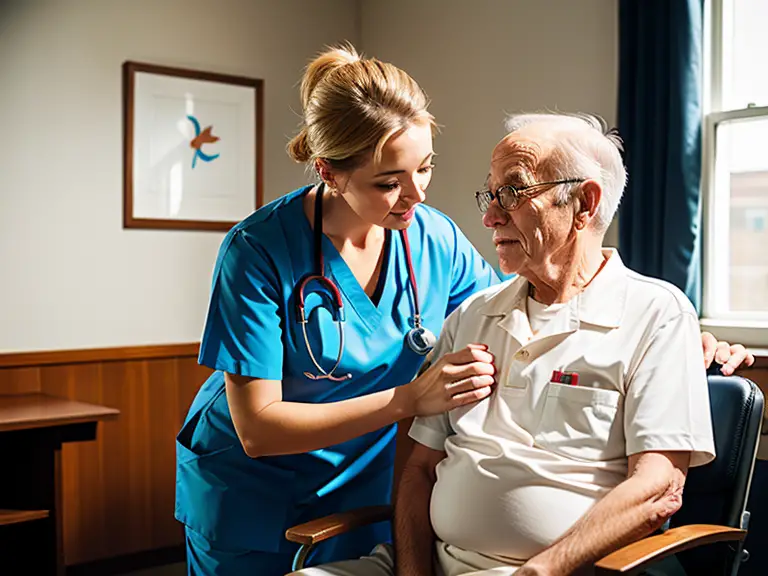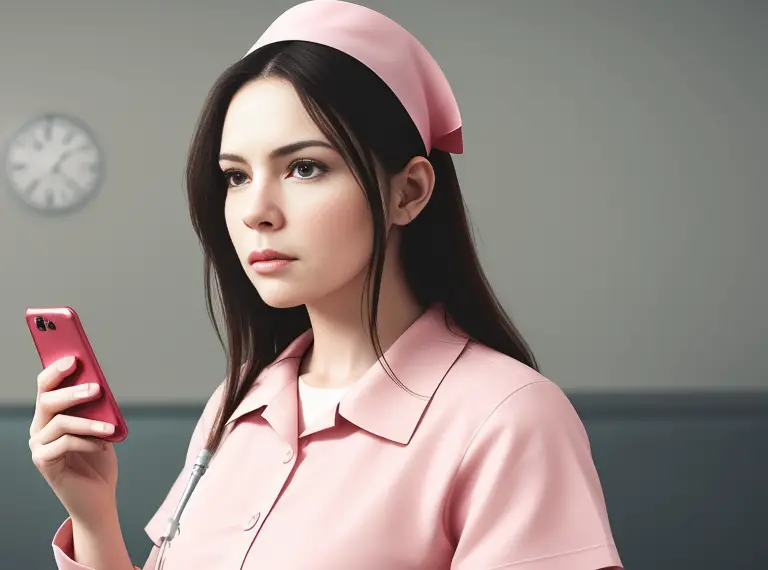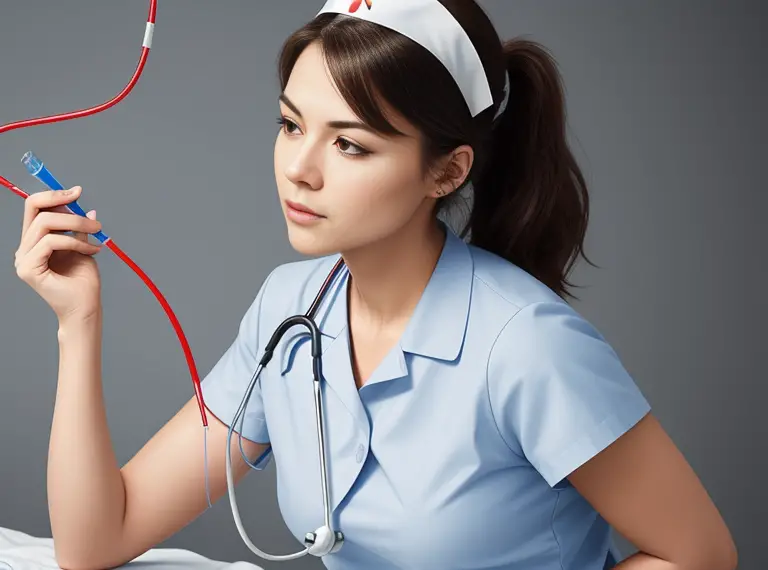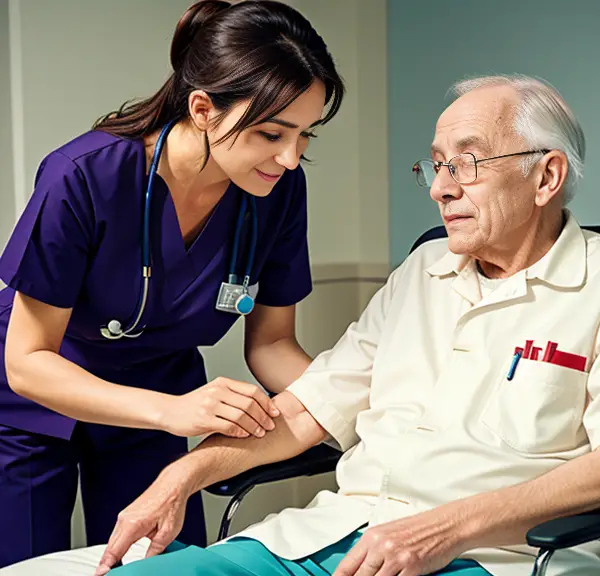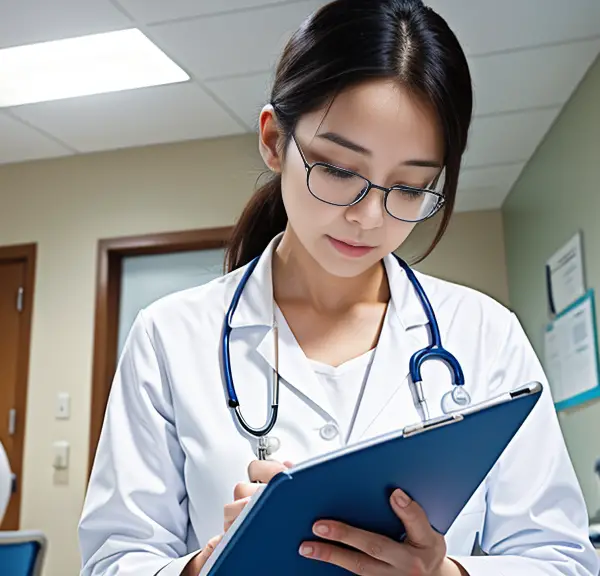Continuous monitoring plays a crucial role in nursing, ensuring the well-being and safety of patients. It involves regularly observing and assessing patients’ conditions, identifying any changes or complications, and taking prompt action to address them. Ongoing nursing monitoring is essential because it:
- Helps detect early warning signs: By monitoring patients consistently, nurses can identify subtle changes in vital signs, symptoms, or behavior that may indicate deterioration in their condition. Early detection allows for timely intervention, preventing potential complications or emergencies.
- Improves patient outcomes: Continuous monitoring enables nurses to track the progress of patients and evaluate the effectiveness of treatment plans. By identifying areas that require adjustment or improvement, nurses can provide targeted care, leading to better patient outcomes.
- Enhances patient safety: Consistent monitoring ensures that patients receive appropriate care and interventions promptly. It helps prevent medication errors, identify and prevent falls or accidents, and reduce the risk of complications associated with various medical procedures.
- Facilitates effective communication: Regular monitoring helps nurses gather comprehensive and accurate information about patients’ conditions. This information can then be shared with other healthcare professionals, promoting effective communication, collaboration, and coordinated care.
With the understanding of the importance of ongoing nursing monitoring, let’s delve into the major elements of effective nursing monitoring and explore the tools and techniques that can be employed for this purpose.
Major Elements of Effective Nursing Monitoring
To ensure effective nursing monitoring, several essential elements need to be considered. These elements include:
- Timeliness: Monitoring should be conducted at appropriate intervals, reflecting the patient’s condition and needs. Regular checks should be carried out, especially in critical care settings, to promptly identify any changes or deterioration.
- Accuracy: Nurses should possess the necessary knowledge and skills to accurately interpret and assess patients’ vital signs, symptoms, and observations. This ensures reliable and precise monitoring, leading to accurate decision-making and interventions.
- Documenting and reporting: Proper documentation of monitoring findings is crucial for maintaining a comprehensive patient record. Nurses should record observations, interventions, and any changes in the patient’s condition accurately. Additionally, they should effectively communicate this information to other healthcare providers for continuity of care.
- Holistic approach: Effective monitoring requires a holistic approach, considering not only physical aspects but also patients’ emotional, psychological, and social well-being. Nurses should assess patients’ overall condition, including their pain levels, emotional state, and ability to perform daily activities.
- Teamwork and collaboration: Monitoring is a collaborative effort that involves multiple healthcare professionals. Maintaining open communication and teamwork within the healthcare team ensures that all aspects of patients’ care are considered, and necessary interventions are implemented promptly.
Now that we have explored the major elements of effective nursing monitoring, let’s move on to discussing the tools and techniques that can be utilized to enhance this process.
Tools and Techniques for Effective Nursing Monitoring
Advancements in healthcare technology have revolutionized nursing monitoring, providing nurses with various tools and techniques to enhance their practice. These tools and techniques include:
- Healthcare technology: The use of electronic health records (EHRs) and digital monitoring systems has simplified and streamlined the monitoring process. These technologies allow for accurate and real-time documentation of patient data, facilitating timely interventions and promoting efficient communication among healthcare providers.
- Vital sign monitoring devices: Automated devices for monitoring vital signs, such as blood pressure, heart rate, respiratory rate, and temperature, provide quick and accurate measurements. These devices enable nurses to monitor multiple patients simultaneously, saving time and ensuring consistency in monitoring.
- Telehealth and telemonitoring: Telehealth allows nurses to remotely monitor patients’ conditions and provide care through video consultations and remote monitoring devices. This technology is particularly useful in remote or rural areas where access to healthcare services may be limited.
- Smartphone apps: There are numerous smartphone applications available that can assist nurses in monitoring and managing patient care. These apps can be used to track vital signs, record symptoms, set reminders for medication administration, and even provide educational resources for patients.
- Regular checks and observation schedules: Implementing a structured schedule for monitoring is essential for ensuring consistency and timeliness. Nurses should establish regular check-in times with patients, where they can assess vital signs, ask about symptoms, and address any concerns or questions.
By utilizing these tools and techniques, nurses can enhance their monitoring practices and provide more efficient and accurate patient care. Now, let’s move on to discussing the development and adoption of efficient monitoring strategies.
Developing and Adopting Efficient Monitoring Strategies
To ensure effective nursing monitoring, develop and adopt efficient strategies that align with patient-centered care. Here are some key considerations for developing monitoring strategies:
- Creating a patient-centered monitoring plan: Each patient is unique and has specific needs and preferences. Nurses should involve patients in the development of their monitoring plan, taking into account their goals, concerns, and values. This patient-centered approach promotes engagement and cooperation, leading to better adherence to monitoring protocols.
- Incorporating feedback and revisions: Monitoring strategies should be flexible and adaptable. Nurses should actively seek feedback from patients and healthcare providers to identify areas for improvement. Regularly reviewing and revising monitoring strategies ensures that they remain relevant and effective.
- Establishing clear communication channels: Effective communication is crucial for successful monitoring. Nurses should establish clear communication channels with patients, their families, and other healthcare providers involved in their care. This allows for the seamless exchange of information and promotes coordinated decision-making.
- Utilizing data and analytics: The use of data and analytics can further enhance monitoring strategies. By analyzing monitoring data, nurses can identify patterns, trends, and potential risks. This information can then be used to adjust treatment plans, improve interventions, and prevent complications.
By developing and adopting efficient monitoring strategies, nurses can provide optimal and patient-centered care. Now, let’s explore the importance of continuous learning and collaboration for enhancing nursing monitoring practices.
Enhancing Nursing Training and Education for Better Monitoring
Continuous learning and collaboration are essential for nurses to stay updated with the latest advancements in monitoring practices. Here’s why these aspects are crucial:
- Importance of continuous learning for nurses: Nursing is a constantly evolving field, with new research, technologies, and best practices emerging regularly. Continuous learning helps nurses stay abreast of these advancements and ensures that they provide evidence-based and high-quality care.
- Collaborating with medical experts and specialists: Collaboration with medical experts and specialists allows nurses to broaden their knowledge and skills in monitoring. Interprofessional collaboration facilitates knowledge sharing, mutual understanding, and a holistic approach to patient care.
By investing in continuous learning and collaboration, nurses can enhance their monitoring skills and deliver better patient outcomes. However, it is important to consider the legal and ethical aspects of nursing monitoring as well.
Legal and Ethical Considerations in Nursing Monitoring
While monitoring patients, nurses must be aware of the legal and ethical obligations that govern patient care. Here are some key considerations:
- Understanding and meeting legal requirements: Nurses must familiarize themselves with the legal requirements and regulations related to monitoring practices in their jurisdiction. This includes obtaining informed consent, maintaining patient confidentiality, and following documentation and reporting guidelines.
- Respecting patient rights and confidentiality: Patients have the right to privacy and confidentiality. Nurses must ensure that monitoring practices are conducted in a respectful and confidential manner, protecting patients’ personal information and maintaining their dignity.
By adhering to legal and ethical considerations, nurses can provide safe, compassionate, and patient-centered care during monitoring.
Remember to stay updated with the latest advancements in monitoring practices, collaborate with medical experts, and continuously learn to enhance your skills. By maintaining a patient-centered approach and respecting legal and ethical considerations, you can provide optimal monitoring and promote positive patient outcomes. Keep up the great work in your nursing practice!
FAQs
Q: How can ongoing nursing monitoring help prevent medication errors?
A: Ongoing nursing monitoring helps prevent medication errors by regularly reviewing and verifying medication orders, ensuring correct administration techniques, and monitoring patients for any adverse reactions or interactions.
Q: Why is a holistic approach important in nursing monitoring?
A: A holistic approach is important in nursing monitoring because it considers not only the physical aspects but also the emotional, psychological, and social well-being of patients. This comprehensive assessment allows nurses to provide holistic care and address all aspects of the patient’s well-being.
Q: What is the role of teamwork and collaboration in nursing monitoring?
A: Teamwork and collaboration are crucial in nursing monitoring as it involves multiple healthcare professionals. Maintaining open communication and teamwork ensures that all aspects of the patient’s care are considered, and necessary interventions are implemented promptly.
Q: How can telehealth and telemonitoring be utilized in nursing monitoring?
A: Telehealth and telemonitoring can be utilized in nursing monitoring by allowing nurses to remotely monitor patients’ conditions and provide care through video consultations and remote monitoring devices. This technology is particularly useful in remote or rural areas where access to healthcare services may be limited.
Q: What are the benefits of utilizing smartphone apps in nursing monitoring?
A: Utilizing smartphone apps in nursing monitoring can assist nurses in tracking vital signs, recording symptoms, setting reminders for medication administration, and even providing educational resources for patients. These apps enhance the efficiency and accuracy of monitoring practices.
Q: How can nurses develop patient-centered monitoring plans?
A: Nurses can develop patient-centered monitoring plans by involving patients in the development process. By taking into account their goals, concerns, and values, nurses can promote engagement and cooperation, leading to better adherence to monitoring protocols.
Q: Why is it important for nurses to incorporate feedback and revisions in monitoring strategies?
A: Incorporating feedback and revisions in monitoring strategies ensures that they remain relevant and effective. By actively seeking feedback from patients and healthcare providers, nurses can identify areas for improvement and make necessary adjustments.
Q: How can the use of data and analytics enhance monitoring strategies?
A: The use of data and analytics can enhance monitoring strategies by allowing nurses to analyze monitoring data and identify patterns, trends, and potential risks. This information can then be used to adjust treatment plans, improve interventions, and prevent complications.
Q: What legal requirements should nurses be aware of in monitoring practices?
A: Nurses should familiarize themselves with legal requirements and regulations related to monitoring practices in their jurisdiction. This includes obtaining informed consent, maintaining patient confidentiality, and following documentation and reporting guidelines.
Q: What ethical considerations should nurses keep in mind during monitoring?
A: Nurses must respect patient rights and confidentiality during monitoring. This includes conducting monitoring practices in a respectful and confidential manner, protecting patients’ personal information, and maintaining their dignity.
